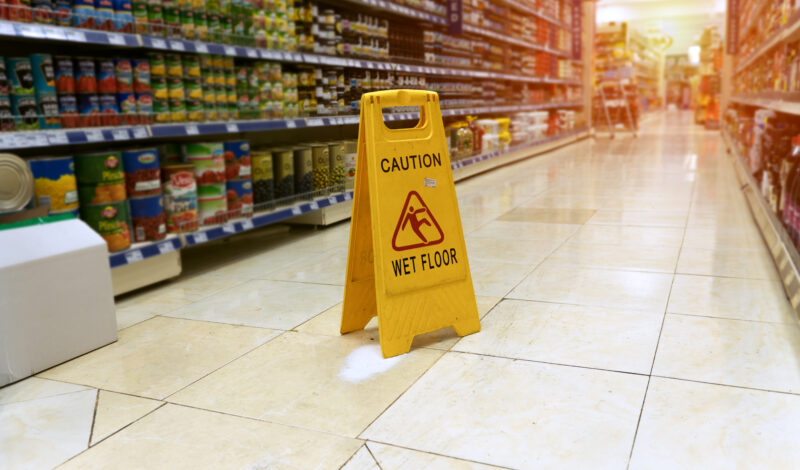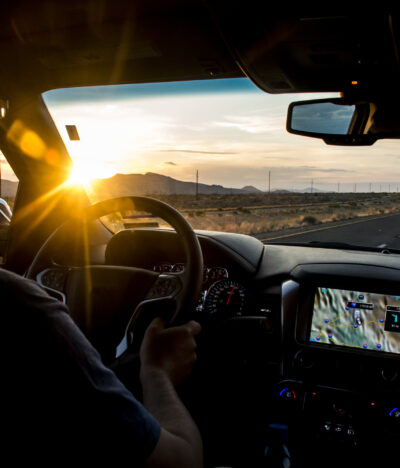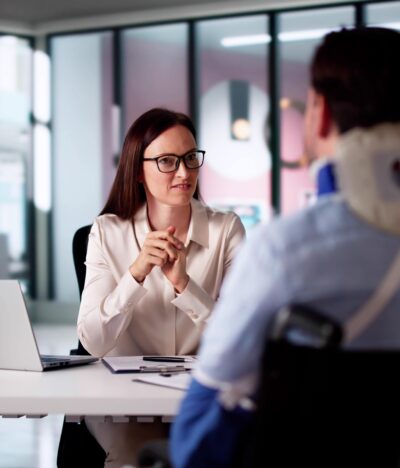Experienced Slip and Fall Attorneys with a History of Positive Results
At The Personal Injury Pros, our slip and fall attorneys possess extensive experience in managing such claims. If you have suffered injuries, rest assured that we are here to assist you in pursuing your claim. Below, you will find responses to frequently asked questions related to slip and fall accidents under your state’s statutes.
To initiate a lawsuit for a slip and fall, one must establish legal responsibility or liability. Property owners, lessees, or those in control of a property are liable if they were aware or should have been aware of hazardous conditions that led to the injury and failed to address them.
Examples of such conditions include spills in store aisles, inadequately roped-off construction sites, electrical cords across customer walkways, broken or uneven flooring, broken stairs, or missing stairwell railings. In most states, property controllers are obligated to ensure the safety of anyone entering the property.
It depends on proving that the individual or entity in control of the property did not maintain it adequately, resulting in the slip and fall and subsequent injuries. Examples include a customer slipping due to loose carpeting in a store, a tenant falling due to a broken stairwell railing, or a poorly cordoned-off construction site exposing passersby to hazards.
Proving liability in slip and fall cases can be challenging. Property owners and insurers often argue that the injured person shares blame, citing distractions, entering off-limits areas, or wearing footwear contributing to the fall. Seeking witnesses and video footage is crucial. The experienced slip and fall attorneys at The Personal Injury Pros can provide a free consultation to help establish the property owner’s liability.
Slip and fall compensation may encompass medical bills, lost earnings, out-of-pocket expenses, pain and suffering, and, in extreme cases, punitive damages. Future medical bills and lost earnings require careful estimation, often involving expert medical testimony.
Depending on the state where the accident happened, individuals generally have two years from the slip and fall date to file a claim. However, on government property, this time limit may be reduced to six months. For minor victims, the statute extends two years past their 18th birthday.
Settlement amounts vary. For example, Nevada operates as a pure comparative negligence state. Damages awarded there may be reduced based on the percentage of the victim’s fault. Factors influencing settlement include the extent of injuries, the victim’s age and health, and the impact on their quality of life and earning capacity. Consulting with your attorney about the applicable state laws where your accident happened will be important.
The duration of a slip and fall lawsuit varies based on the defendant’s response, case complexity, and the severity of injuries. Minor injury cases often settle out of court, while more contentious cases may proceed to trial.
Seeking legal representation is crucial, as insurance adjusters aim to minimize payouts. The Personal Injury Pros offer free case consultations and operate on a no-recovery, no-fee basis, ensuring access to legal assistance without upfront costs.
Property controllers, including owners, lessees, or occupants, are responsible for maintaining a safe environment. Failure to do so, leading to a slip and fall, makes them liable for legal action.
Establishing negligence involves demonstrating an unreasonable risk of harm on the property, the defendant’s awareness of the hazardous condition, and their failure to address it. Witness testimony, photographs, or video footage are essential in proving negligence.
In the aftermath of a slip and fall, prioritize seeking medical attention. Additionally, file a report with the property manager or owner, document the scene with photographs, gather witness information, obtain employee details, and refrain from engaging with insurance representatives without legal counsel. Preserving evidence and seeking prompt legal assistance, such as from The Personal Injury Pros, is crucial for building a strong case.








